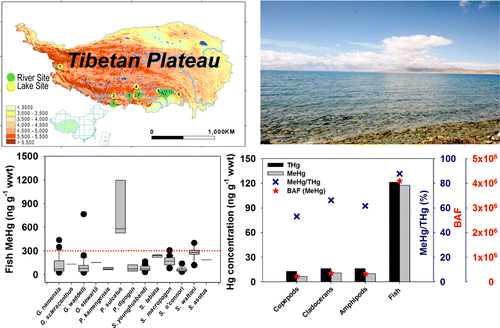| News |
| Latest news | |
| Int’l Cooperation activities | |
| Events & Announcement | |
| Recent Activities |
| Location: Home>News>Recent Activities |
| Is there Mercury in high-altitude aquatic ecosystems on the Tibetan plateau? |
Our understanding of the biogeochemistry of mercury (Hg) in high-altitude aquatic environments remains limited. The Tibetan Plateau (TP) is one of the Earth’s most significant continental-scale high lands, yet much remains unknown about the Hg bioaccumulation and biomagnification in these pristine ecosystems. To advance our understanding in the Hg concentration in aquatic ecosystems on the TP, ITP associate Professor ZHANG Qianggong joined hands with research staff from the Hongkong University of Science and Technology to widely survey lakes and rivers on the southern TP. In this effort, they collected 166 wild fish samples of 13 species from 13 rivers and lakes Laboratory measurement not only quantified the total Hg (THg) and methyl-Hg (MeHg) concentrations in the axial muscle of fish, but also identified various Hg concentrations within and between species. The quantification surprised the researchers, as the Hg concentration in wild fish on the Tibetan Plateau is comparable to those observed in wild fish growing in human-impacted areas. “The fish Hg concentrations might be linked to the limited available environmental Hg data and special geochemical characteristics in the region, such as Hg loading, pH, low temperature, and high ultraviolet (UV).” Said Dr. Zhang, “The long lifespan and slow growth of the fish under the low-productivity environments may be the major biological factors that help to build up the fish Hg levels.” Entitled “Mercury in Wild Fish from High-Altitude Aquatic Ecosystems in the Tibetan Plateau”, this study sheds some light on the geochemical and biological controls of Hg bioaccumulation in fish and biomagnification in the aquatic food web in arid high-altitude environments. It has been accepted by Environmental Science &Technology (http://pubs.acs.org/doi/abs/10.1021/es404275v?prevSearch=qianggong%2Bzhang&searchHistoryKey=).
|

